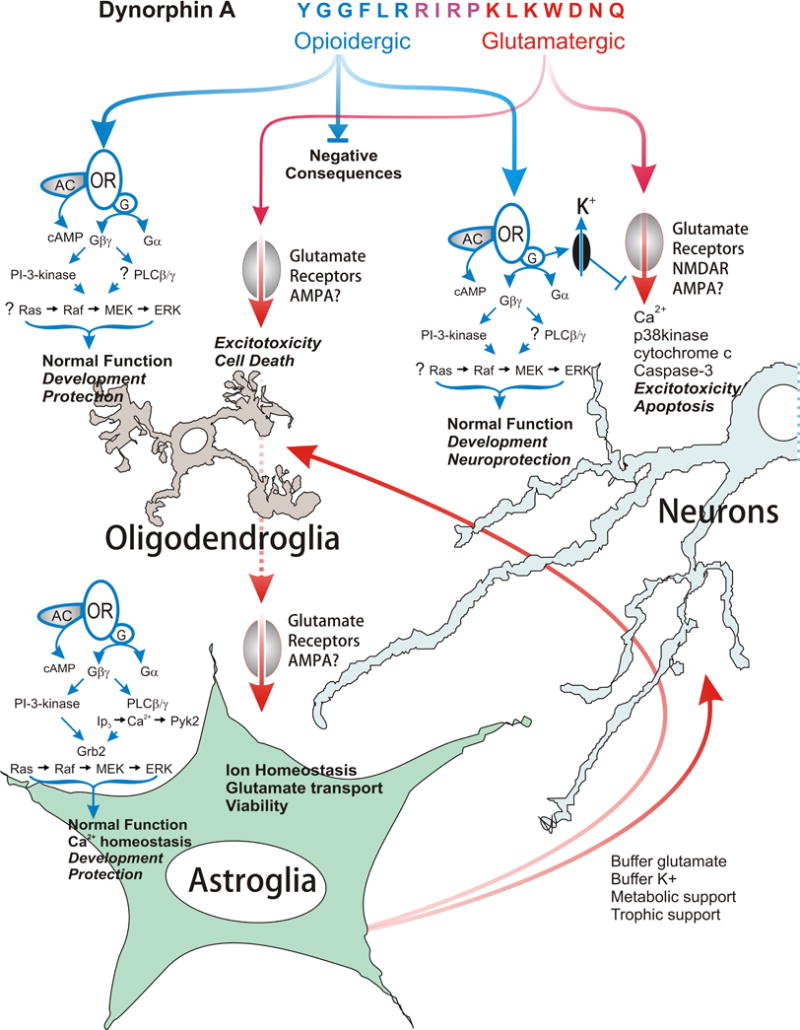Figure 2.

Summary of the neuroprotective and deleterious affects of dynorphin A (1–17) in neurons, astroglia, and oligodendroglia. Dynorphin A has intrinsic activity at both opioid and non-opioid, i.e., glutamatergic receptors. The N-terminal peptide derivatives are active at opioid receptors, whereas C-terminal-derived fragments can activate glutamate receptors. At physiological concentrations, dynorphin functions normally by activating kappa-opioid receptors (KOR). The activation of opioid receptors can have beneficial effects in isolated neurons, but may also have negative consequences depending on the particular neural cell type affected, as well as the nature and timing of the insult. By contrast, at supraphysiological levels, dynorphin A acts via glutamate receptors and has excitotoxic effects in neurons and oligodendroglia, and potentially destabilizes astroglia. Abbreviations: adenylyl cyclase (AC); alpha-amino-3-hydroxy-5-methylisoxazole-4-propionate receptors (AMPA); cyclic AMP (cAMP); extracellular signal-regulated protein kinase (ERK); growth factor receptor-bound protein 2 (Grb2); G-protein complex (G); G-protein-alpha subunit (Gα); G-protein-beta-gamma subunit complex (Gβγ); inositol trisphosphate (IP3); p38 mitogen-activated protein kinase (p38kinase); N-methyl-D-aspartate receptors (NMDAR); phosphatidylinositol 3-kinase (PI-3-kinase), phospholipase C-beta-gamma (PLCβ/γ); proline-rich tyrosine kinase-2 (Pyk2); protein kinase C (PKC);.
